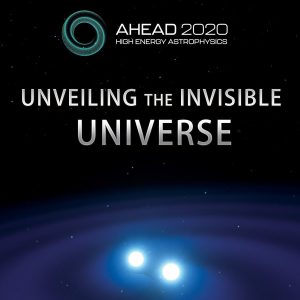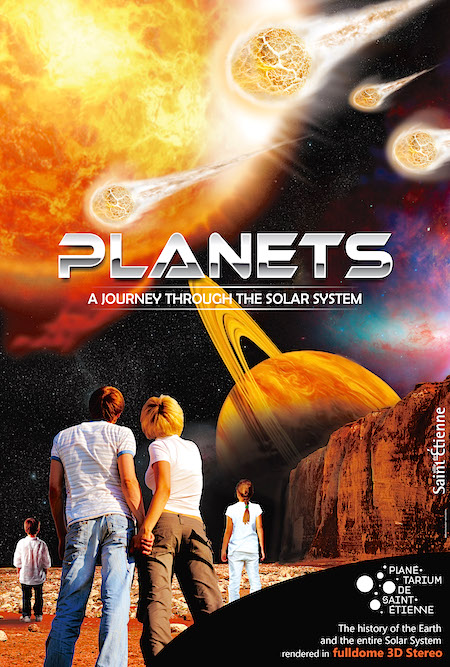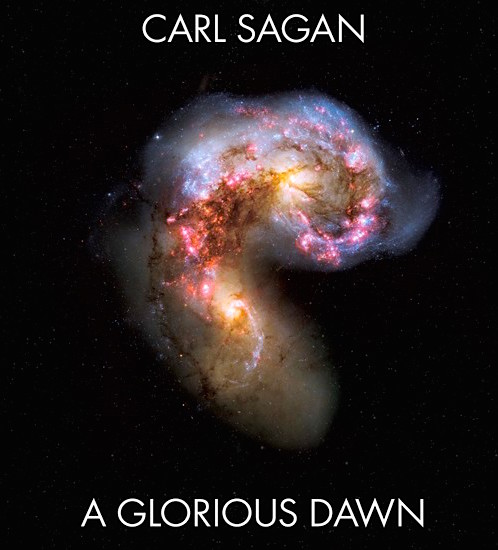A presenter-led show looking at the night sky from Indian Vedic culture. Witness the skies above India and learn about the Gods that move across the skies through the 12 constellations of their Zodiac.
Duration: 25 mins
Suitable for all ages
A presenter-led show looking at the night sky from Indian Vedic culture. Witness the skies above India and learn about the Gods that move across the skies through the 12 constellations of their Zodiac.
Duration: 25 mins
Suitable for all ages
This fulldome show is about the traditional picture book of the Christmas Story, offering a wonderful experience for children and adults in the Planetarium. It brings the traditional Christmas Story to life for you and your family. You accompany Mary and Joseph from the Annunciation by the angel Gabriel in Nazareth to the search for a room in overcrowded Bethlehem.
Stand before King Herod in his great palace, alongside the three Wise Men from the East. Visit the shepherds and their flocks in a field and, in a stable, find the child in a manger.
Duration: 27 minutes
Suitable for all ages.

 The categorisation of Dwarf Planets splits the world into two parts: one that loved Pluto as planet and the others who preferred simpler cataloging of celestial bodies.
The categorisation of Dwarf Planets splits the world into two parts: one that loved Pluto as planet and the others who preferred simpler cataloging of celestial bodies.Show details
Duration: 15 min.
Audience: General
Audio: 5.1 Surround Sound (Separate channels available)
Narration: English, French, Russian, Dutch (Can be dubbed in other languages)
 The Big Bang Theory is one of the leading explanations of how the universe came into existence.
The Big Bang Theory is one of the leading explanations of how the universe came into existence.Show details
Duration: 16 min.
Audience: General
 Two alien kids in some other Galaxy got the taste of Chocolate. In search of some imaginary planet made of chocolate, they traveled the Universe, eventually arriving at our Milky Way. Searching each planet of the solar system to derive which one is made of chocolate, they learn lots of other interesting facts about our Solar System.
Two alien kids in some other Galaxy got the taste of Chocolate. In search of some imaginary planet made of chocolate, they traveled the Universe, eventually arriving at our Milky Way. Searching each planet of the solar system to derive which one is made of chocolate, they learn lots of other interesting facts about our Solar System.Show details
Duration: 24 min.
Audience: General
Audio: 5.1 Surround Sound (Separate channels available)
Narration: English, Hindi, French, Russian, Dutch, Turkish, Chinese
 We present a lovely experience of our Solar System specially created for young audiences. It is perfectly timed to engage children and give about the right amount of knowledge with lovely visuals and catchy tunes and is perfect for Kindergarten and Pre-Primary kids. With this, we feel that learning about the solar system is an important part of every child’s education.
We present a lovely experience of our Solar System specially created for young audiences. It is perfectly timed to engage children and give about the right amount of knowledge with lovely visuals and catchy tunes and is perfect for Kindergarten and Pre-Primary kids. With this, we feel that learning about the solar system is an important part of every child’s education.Show details
Duration: 8 min.
Audience: General
 Our Moon is the most prominent & special companion in Earth’s night sky. It was year 1610, when Simon Marius & Galileo Galilei discovered Jupiter’s four large satellites, bringing the number of known moons in the Solar System to five. Our Solar System now embodies more than 170 named moons around its planets. Despite being few in number, the Planets have often overshadowed the moons in terms of size, and as our technology advances these minor members of solar system display amazing aspects & facets beyond our wildest imagination. The Moons now outshine their stolid parents in character. Join us for a tour of some of the most frigid, violent & absolutely strange worlds in ‘Bizarre Moons’.
Our Moon is the most prominent & special companion in Earth’s night sky. It was year 1610, when Simon Marius & Galileo Galilei discovered Jupiter’s four large satellites, bringing the number of known moons in the Solar System to five. Our Solar System now embodies more than 170 named moons around its planets. Despite being few in number, the Planets have often overshadowed the moons in terms of size, and as our technology advances these minor members of solar system display amazing aspects & facets beyond our wildest imagination. The Moons now outshine their stolid parents in character. Join us for a tour of some of the most frigid, violent & absolutely strange worlds in ‘Bizarre Moons’.Show details
Duration: 17 min.
Audience: General
Audio: 5.1 Surround Sound
Narration: English, Hindi, Russian, French, Dutch, Chinese, Portuguese
 A Tale of Scale is a delightful short feature in the format of a poem. This show is about the size comparison of Planets and Stars. This show achieves a very unique way of representing the size comparison. With the help of fun filled motion graphics, cute fable, rhyming script and melodious music, the show will put a smile on your face and is very much adored by young audiences and is suitable for all ages!
A Tale of Scale is a delightful short feature in the format of a poem. This show is about the size comparison of Planets and Stars. This show achieves a very unique way of representing the size comparison. With the help of fun filled motion graphics, cute fable, rhyming script and melodious music, the show will put a smile on your face and is very much adored by young audiences and is suitable for all ages!Show details
Duration: 5 min.
Audience: General
 Astralis is about the life cycle of Stars. From the birth of Star in a stellar nursery to its journey towards a black hole or supernova, we’ve explained the phenomenon in a very easy narrative. With the eye catchy visuals and lovely music, the show works for all age groups including school audiences.
Astralis is about the life cycle of Stars. From the birth of Star in a stellar nursery to its journey towards a black hole or supernova, we’ve explained the phenomenon in a very easy narrative. With the eye catchy visuals and lovely music, the show works for all age groups including school audiences.Show details:
Duration: 14 min.
Audience: General
Audio: 5.1 Surround Sound (Separate channels available)
Narration: English, Hindi, Russian, French, Dutch, Turkish, Chinese, Portuguese, (Can be dubbed in other languages)

Set on the surface of the Moon in the year 2081, a grandfather and granddaughter are watching a solar eclipse from the scenic cliffs overlooking their moon colony. They discuss the contrasts between the moon, the only home the granddaughter knows, and the Earth, where the grandfather has spent most of his life.
As they watch the Moon’s shadow move across the Earth, the grandfather tells stories of crashing asteroids, erupting volcanoes, roaring dinosaurs, and more. The stories are experienced by the viewers, beginning with a view through the telescope of the dynamic Earth; a stark contrast with the unchanging lunar landscape.
EARTH’S WILD RIDE is like many tales shared by grandparents over the centuries, except “the old country” is really another planet, always visible, but totally unlike the granddaughter’s world. While learning about eclipses, the ice age, Earth’s water cycle and differences between the Earth and Moon, the audience is taken on a roller-coaster-like ride through canyons of raging rivers and hot flowing lava. Adventure and appreciation for home fill this 20-minute journey back to the Earth.
Ages: All ages
Length: 20 mins
Also available in English*, Chinese (Mandarin), French, German, Hebrew, Italian, Korean, Polish, Russian, Spanish* and Turkish. * indicates subtitles available in that language.
 Unveiling the Invisible Universe
Unveiling the Invisible UniverseFor thousands of years the humans observed the light coming from the night sky with their eyes. In the beginning of the 17th century, the invention of the telescope by Galileo revolutionized our knowledge of the Universe. Finally, in the 20th century with the advent of rockets, it became possible to go above the earth’s atmosphere and observe X-ray and gamma ray radiation which are the marks of the hot and violent Universe. But it is not only light that can give us information about the cosmos. Neutrinos and cosmic rays also provide vital information. Finally, the detection by the LIGO experiment of gravitational waves from two merging black holes opened a new window in astrophysics. This video presents images of the cosmos as revealed by all these different messengers.
KS4+5 / Adults
Length 29 mins
Also available in Slovak, French, Japanese, Russian, Italian, Spanish, Castilian, Catalan, Galician and Urdu
 Seeing! A photon’s journey across space, time and mind
Seeing! A photon’s journey across space, time and mindFollow the journey of a single photon as it is produced in a distant star, before travelling across the vast expanse of space to land on someone’s retina. This fulldome planetarium show explores some of the fascinating processes of the cosmos, from astrophysics to the biology of the eye and brain. Funded through a generous grant from ZEISS, the show is narrated by astronomer and science communicator, Neil deGrasse Tyson.
Length 28 mins
Also available in German, Italian, Swedish and Russian.
 Phantom of the Universe
Phantom of the UniversePresenting a new full-dome planetarium show: Phantom of the Universe: The Hunt for Dark Matter, with narration by Academy Award winner Tilda Swinton and sound by an Academy Award winning team at Skywalker Sound. From the journey of protons racing through the world’s largest particle collider in Europe to up-close views of the Big Bang and emergent cosmos, Phantom of the Universe is a new fulldome planetarium show designed to immerse audiences in the search for dark matter.
The show has fantastic visuals of the LHC and the Homestake Mine. It covers everything from the Big Bang to galaxies to a deep underground experiment in the Homestake Mine in South Dakota to the Large Hadron Collider in Geneva. It even has a brief discussion of the Higgs boson.
Age KS4+5 / Adults
Length 28 mins
 Out There: The Quest for Extrasolar Worlds
Out There: The Quest for Extrasolar WorldsOut There — The Quest for Extrasolar Worlds tells the story of how human curiosity has driven us to look outwards for millennia, to discover and explore new and distant worlds and to find the unfamiliar and extraordinary forms of life that could exist in the mysterious realms of the Universe.
The show is a production by The Swiss Museum of Transport Planetarium, directed and produced by Marc Horat, in cooperation with National Centre of Competence in Research PlanetS and ESO.
Out There — The Quest for Extrasolar Worlds will transport viewers from this world to entirely new and foreign ones. The show features the primitive science fiction of early civilisations, to the future space missions that will observe the Universe in greater-than-ever detail and travel to the surfaces and oceans of moons in our Solar System.
Show Type
All ages, 30 mins
 FORWARD! To the Moon
FORWARD! To the MoonKari Byron from Crash Test World and MythBusters launches us on a journey beyond the Earth towards a sustainable future in space. NASA’s 21st century Artemis program, named after the Greek moon Goddess and twin of Apollo, is the next step in our mission to explore the universe.
Length: 26 mins
All ages
 Europe to the Stars
Europe to the StarsEurope to the Stars takes the viewer on an epic journey behind the scenes at the most productive ground-based observatory in the world, revealing the science, the history, the technology and the people.
Discover the European Southern Observatory in a story of cosmic curiosity, courage and perseverance; a story of observing a Universe of deep mysteries and hidden secrets; and a story of designing, building and operating the most powerful ground-based telescopes on the planet.
The movie focuses on the essential aspects of an astronomical observatory, while offering a broader view of how astronomy is done. From site-testing to locate the best places in the world for observing the sky, to how telescopes are built and what mysteries of the Universe astronomers are revealing.
Length 31min / KS 3-5 / General audiences
Also available in: German, Japanese, Czech and Spanish
Travel to ancient Egypt to see how science was used to tell time, make a workable calendar, and align huge buildings.
Length: 30-36mins

Discover the fascinating landscapes of our Solar System.
Glide over the landforms of Mars, soar over the clouds of Jupiter and dive through the rings of Saturn.
Witness the violent beginnings of planet formation – as you try and avoid colliding with an asteroid!
Using real photographs taken by space probes as well as stunning computer generated imagery, the film presents a modern view of the Solar System in the dynamic context of its evolution.
Preview the full film below.
Length: 30min
KS3 – KS5 / Families / Adults
Also available in Arabic, Czech, French, Italian, Korean, Portuguese, Romanian, Spanish
Our award winning live astronomer show, suitable for all special and complex needs. SEN, SLD, PMLD…
Length: 15mins


Our highly acclaimed and popular ‘Islamic Astronomy’ show, presented by one of the UK’s most experienced astronomers.
This lively interactive show, goes back in time to the lands of Arabia where astronomers looked up at the night sky and made links between the heavens and scriptures within the holy book – The Quran
Show overview
Show details
Lift off the planet in your imagination and head straight for the Pillars of…
Length: 6mins
The Royal Observatory Greenwich proudly presents selected images of the Astronomy Photographer of…
Length: 12mins
Embark on a journey to the centre of the Milky Way and during seven minutes travel faster than light, from…
Length: 7mins
Starry skies are a vanishing treasure because light pollution is erasing our view of the Universe. Such pollution…
Length: 6mins
Cosmic art created by dying stars: 12 echoes of light from dramatic explosions in deep space…
Length: 5mins
Visible or invisible, light is everywhere. Light creates moods and emotions…
A brief introduction to the immense collections of stars called galaxies. Learn how clues about the nature of galaxies (‘milky objects’)…
Length: 14mins
The best of both worlds: an astronomer-led night sky curriculum linked show followed by a 360˚ film. Available with all performances…
Length: 30-45mins
A thrilling 10-min field trip to our nearest star the Sun…
Length: 10mins
A set of three short 7-min immersive films addressing Light, Clouds and Meteorites. Aimed at children 3-7 years old…
Length: 3 x 7mins
A cosmic tragicomedy for older children and adults. The script is written in verse, featuring astrophysicist Kurioseo Kuirosei…
Length: 20mins
7-minute soundbites of scientific information communicated with stunning 360˚ visuals…
Length: 3 x 7mins
Take a breathtaking journey from the UK to the edge of the Solar System and beyond…
Length: 10mins
Key Stage 4 GCSE syllabus linked astronomer show, delivered by a teaching…
Length: 90mins
Introduction to the current night sky, Topics covered: Day/Night, Seasons, Moon Phases, Neil Armstrong, Buzz Aldrin, Solar System Structure and…
Length: 45mins
Introduction to the current night sky, touching on the topic Seasonal changes (Year 1) of the 2014 Science…
Length: 25mins
The mission objective of the Voyager Interstellar Mission (VIM) is to extend the NASA exploration of the solar system beyond the neighborhood of the…
Length: 5mins
Simple, ability appropriate presenter-led tour of the night sky, beginning with sunset…
Length: 15mins
What happened to Mars? Where did the water go? Was there once life on this red world? Could there still be life somewhere…
Length: 23mins
What’s the difference between a sphere and a disc? A ball and a pancake? Lift off in a rocket and find out!…
Length: 9mins
Explore the motions of the stars, Sun, Moon and planets across the sky. Are they moving, or are we…
Length: 5mins
How big is the distance between the Earth and the Sun – or between the Sun and the other planets?…
Length: 13mins
The prospect that we may not be alone in the Universe is taken as a fact in films, by writers and a great many scientists…
Length: 25mins
Sunshine is a lovable cartoon Sun – and he doesn’t care if children get loud or excited: in fact…
Length: 14mins
How did our solar system originate? What chain of events led to its creation? Just as detectives look for traces of evidence to solve a…
Length: 22mins
A film about two students as they interact with a female astronomer at a local star party…
Length: 24mins
Do you know what an astronomer does? Today’s astronomer is not the lone observer of past centuries….
Length: 25mins
Join scientists who are investigating the boundary between our Solar System and the rest of our galaxy in…
Length: 27mins
Live, curriculum-linked show based on the astronomy of Harry Potter, Dr Who, Star Trek, Marvel Comics, etc…
Length: 10-15mins
Travel to a unique planet — to call your home! Imagine that you are a traveller from the depths of interstellar…
Length: 20mins
A 360˚ film that explains and explores the nature of dark matter, the missing 80% of the mass of the…
Length: 20mins
Stunning 360° film exploring the inner workings of global climate, using rich visualisations based on…
Length: 24mins
What holds galaxies together? What are the building blocks of the Universe? Why does the…
Length: 38mins
An exhilarating journey through time and space in search of our origins. Where did the atoms and molecules that make up our bodies…
Length: 26mins
Join scientists in the hunt for real aliens. How do we know which planets could harbour life? What are the requirements for…
Length: 25mins
Experience a new view of the Cosmos with live actors and stunning graphics, filmed at various ESA…
Length: 45mins
The night sky, both beautiful and mysterious, has been the subject of campfire stories, ancient myths and awe for as long as…
Length: 30mins
One of the most powerful tools in astrophysics is the Hertzsprung-Russell diagram, describing the…
Length: 16mins
The immense distances between objects in space were not understood for ages and our Milky Way was a profound mystery…
Length: 30 & 45mins
Discover spectroscopy, the science of light, and learn how scientists study the Universe by…
Length: 28mins

A planetarium adaptation by students of A Glorious Dawn, the stirring short remix from Symphony of Science based on Carl Sagan’s Cosmos.
In Cosmos Sagan forsees a wonderful future for the human race after it begins to colonise other worlds and travel to distant stars.
Inevitably, future spacefaring humans will encounter planets where the entire galaxy lights up the dawn sky, instead of one star – not a sunrise but a galaxyrise.
Preview the full video below. See the original YouTube release below it.
Length: 3.5min KS4 – KS5 / Adults
High-energy astrophysics plays a key role in understanding the Universe and it’s hot and violent nature. The hot gas…
Length: 29mins
The night sky is effectively a view of infinity; could alien life exist out there somewhere? This film…
Length: 51mins
MAGNETISM demonstrates how the Earth’s magnetic field protects our planet from energetic particles from the Sun and galaxy, and how the magnetic…
https://immersive-experiences.co.uk/magnetism
A light-hearted introduction to the New Horizons mission which flew past Pluto in 2015…
Length: 5mins
Every second the Sun emits a million times more energy than the world consumes in a year. How does the Sun make such vast amounts of…
Length: 11mins
With muscles and bones built for Earth, you’d be a superstar on the Solar System’s low-gravity worlds. Imagine bungee jumping into Space from an…
Length: 11 & 17 & 22mins
We live on a small planet revolving around a star similar in size, luminosity and location in the galaxy as countless others….
Length: 30mins
Superbly visual 360° film presenting the idea that art, music, mathematics and physics are fundamentally related…
Length: 26mins
Discover the wonders of our Sun. Our local star’s incredible energy has supported life…
Length: 20mins
A spellbinding account of humanity’s first attempts to leave planet Earth: from the launch of the first artificial satellite Sputnik, to the…
Length: 30 & 41mins
One of the most asked questions about the Universe is “How big is it?” and that’s one of the hardest to…
Length: 23mins
The exploration of space is the greatest endeavour that humankind has ever undertaken. What does it take to be part of this incredible journey? What…
Length: 23mins
A tour of the major astronomical milestones of the last 3,000 years – from the cosmological models of antiquity, to the Ptolemaic system of…
Length: 32mins
A journey of discovery from the Pantheon to the Library of Alexandria to the streets of Leptis…
Length: 21mins
Visit the classic Mayan cities to discover how the Maya aligned their temples to watch their sky gods and…
Length: 26mins